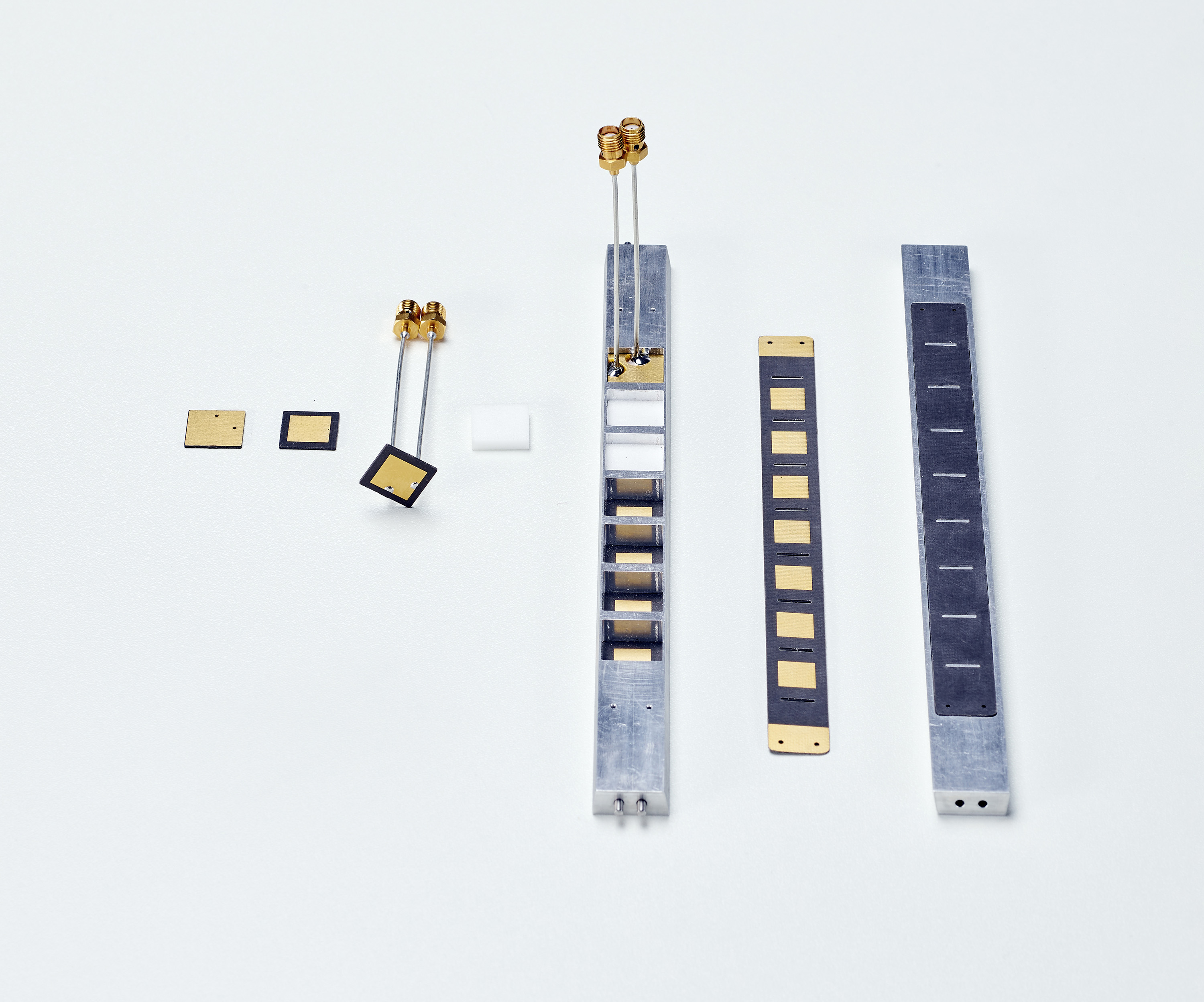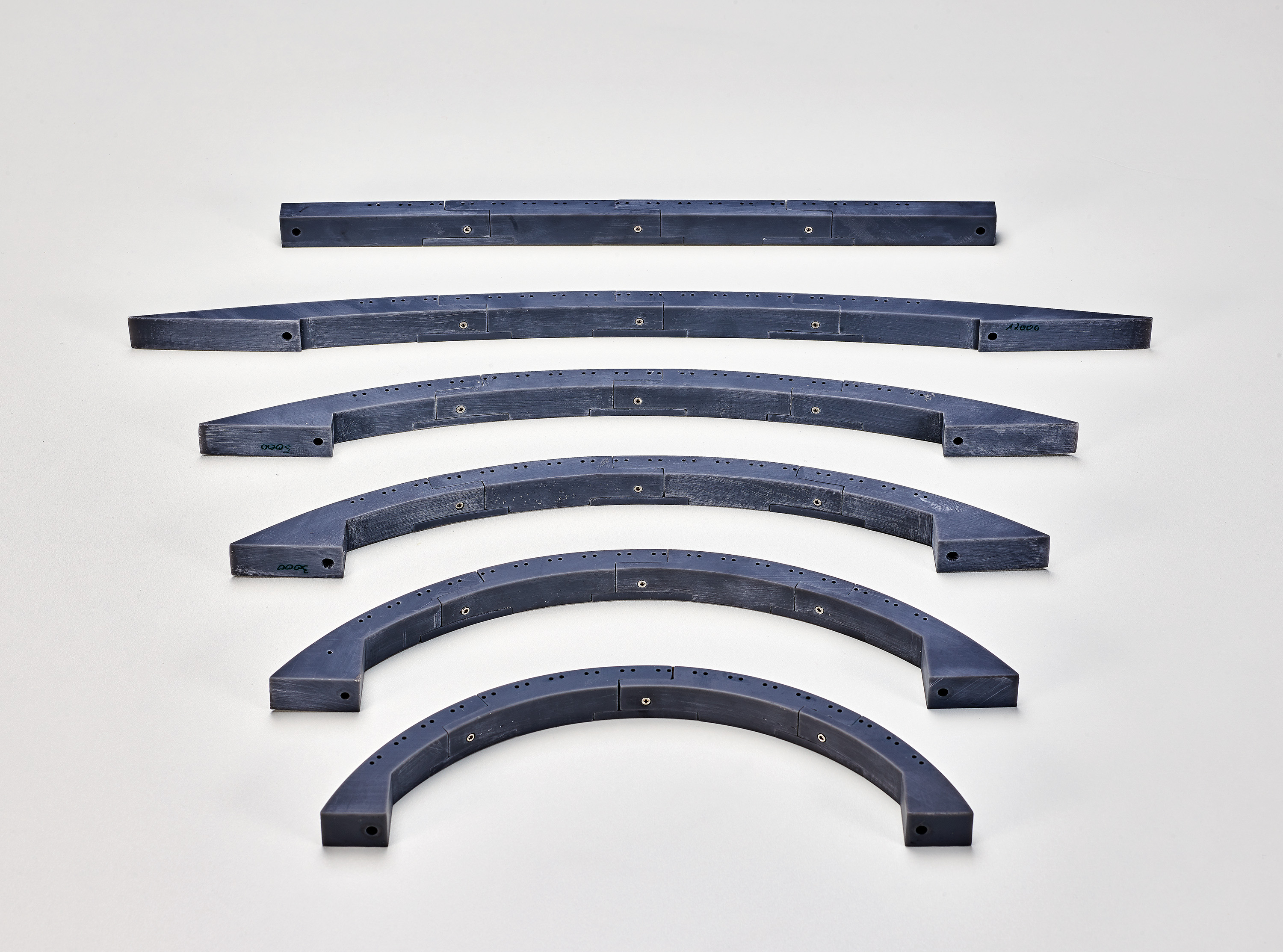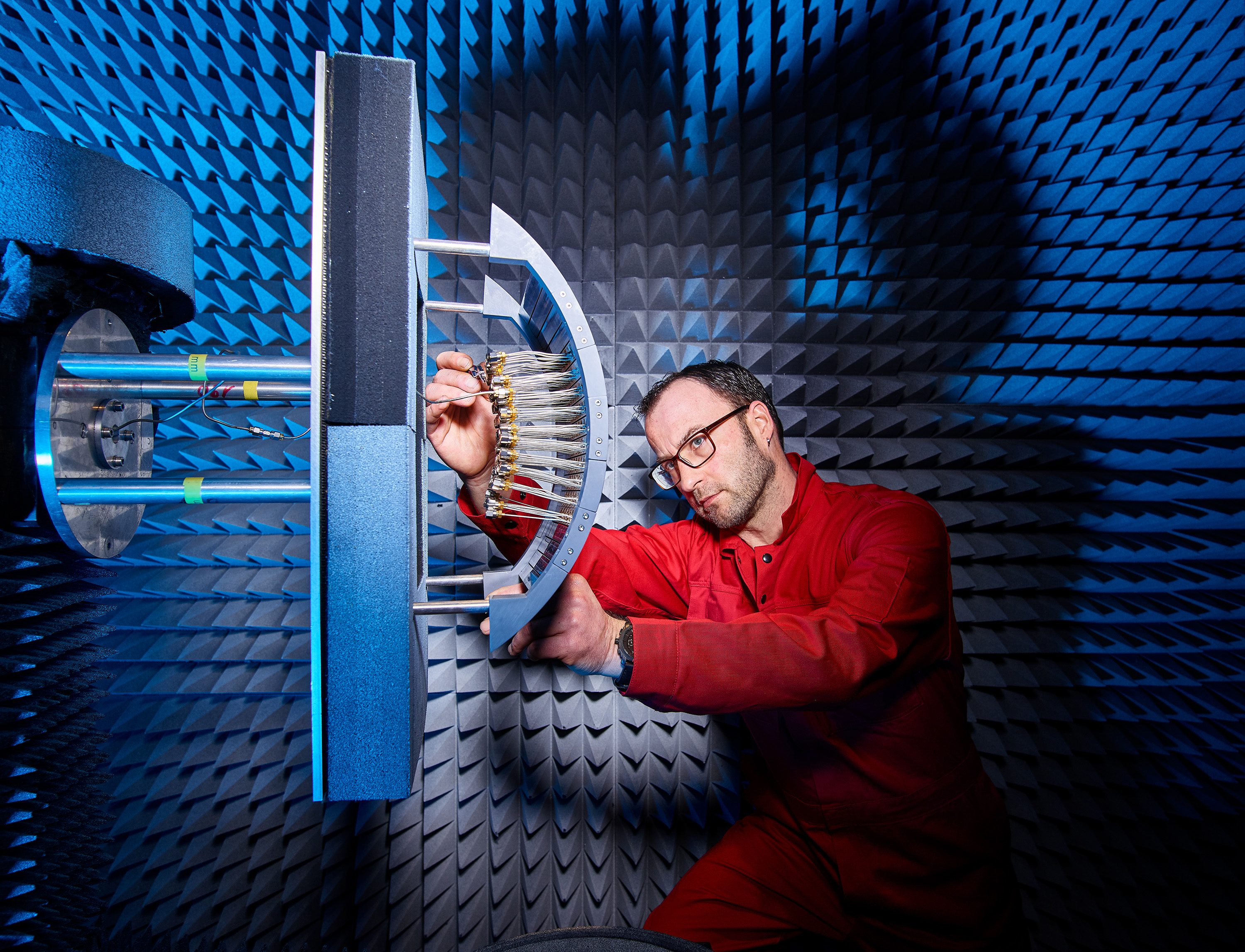Examination of the scan-angle dependant active impendance of conform apertures
The curvature of an array antenna's aperture plane has a fundamental effect on relevant parameters such as the measure of the mutual coupling of the emitting elements and, with this, on the active steering impedance of each individual radiator. The ability to efficiently predict these effects numerically is of great interest for practical applications.



Coupling in Broadband Array Antennas
The numeric examination of the radiation properties of electrically large array antennas is highly CPU-intense. For time reasons, idealized radiators are frequently modelled with electromagnetic properties that are independent of their environment. It is comparatively easy to specify the far field of arrays of such idealized radiators. In practice, however, it has been shown that this very simplified approach does not provide sufficiently accurate predictions of an array antenna's capacity. Real radiators couple significantly by means of, among others, waves propagating on the carrying structure, of free space radiation, or of imperfect feeding networks. These interferences produce noticeable deviations between the ideal behavior and the measurements. Depending on the configuration of the array, these deviations reach from a moderate deterioration of the capacity up to the total loss of the emission capacity at specific steering angles (co-called blind spots). This last case occurs because of a significant missmatch to the active impedance of the radiators.
In addition, for future systems, it will probably no longer be sufficient to consider the coupling for one function within an array (narrow band). It is becoming apparent that the coupling has to be looked at between multiple arrays or within an array via multiple modes (broadband) because of the increasing number of array antennas on platforms.
Development of Tailored Modelling Tools
The modelling of the coupling of the radiators is by far the most time-consuming step in the numeric design of electrically large array antennas. For large planar structures with regularly arranged radiators, except for the edge elements, the coupling can be examined comparatively quickly with a good accuracy using so-called Floquet modes. In the process, the time savings are a result of the assumption of the periodicity of the fields. Thus, only a comparatively compact unit cell has to be analyzed, instead of the entire structure.
If, in contrast, an electrically large array antenna has to be designed with a curvature, for instance because it has to be platform-integrated, there are no suitable commercial modelling tools available at present. That is why, at Fraunhofer FHR, special numeric methods have been tested with the goal of efficiently predicting the coupling of the radiators, taking into consideration the curvature.
Metrological Examinations
A broadband antenna demonstrator was designed in 2018 to test the methods developed. The demonstrator is designed in a modular format for the X-band. Individual linear array modules are used as basic elements. These consist of so-called »stacked patch antennas« (figure 1). By means of »3D printed« molded parts (figure 2), a set of linear array modules can be put together under laboratory conditions for apertures with different radii of curvature (figure 3). In addition to circular cylindrical shapes, location-dependent curvatures can also be implemented. Since it is expected that the occurrence of coupling effects is polarization-dependent, all radiators can be stimulated in two polarization modes that are orthogonal to each other. To be able to specifically observe the creation of interferences such as blind spots and grating lobes (significant radiation emittance into unwanted solid angles), the radiator pattern can be varied using printed blind modules. First measurements on isolated radiators show a high level of consistency with the simulation.
Outlook
In the near future, the coupling will be measured for typical curvature profiles. The accuracy of the developed numeric methods will be checked. If the coupling is captured with sufficient accuracy, countermeasures to avoid the reduction of the coupling can be modelled systematically and tested experimentally. Known approaches are, for example, decoupling networks integrated into the feeding networks or the use of purpose-built covers that can reduce the reactive storing of the field energy directly in front of the aperture for blind spots (so-called wide-angle impedance matching structures, WAIM in short). Fraunhofer FHR is planning on designing such WAIMs for typically occurring curvature profiles within the scope of the EDA project METALESA II, which is set to start in 2019, and to test them experimentally using the demonstrator that has already been created.